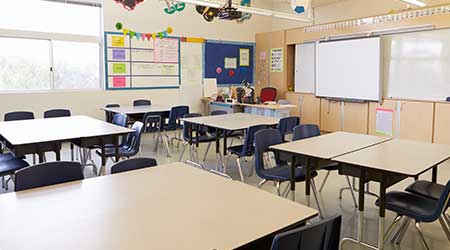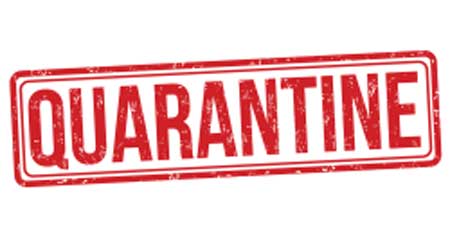
Coronavirus Advice: How to Cope with Facility Closure
March 17, 2020
(Click here for our coronavirus resources and landing page.)
As social distancing policies begin to take hold as a strategy for containing COVID-19, schools, conference centers, theaters, and other large-gathering public spaces are being closed for two or three weeks at a time, or more. When cases are confirmed, the population that came in contact with the individual has to self-quarantine for two weeks. In addition, companies are leveraging remote work policies as a way to protect their staff. These are prudent measures and should be followed as prescribed.
In these uncertain times, it is helpful to remain engaged in purposeful and positive tasks. If it is personally feasible, while following all recommendations for preserving public health, and if you are allowed in your facility during the duration of the closure, here are some ideas to consider.
If your facility has onsite food service, work with your food service director to establish a plan for disposal of perishable goods in the event your facility is suddenly closed. Sometimes re-supply orders can not be cancelled in time, and facilities may be bringing in thousands of dollars of perishable goods they will have no way to use or store. Partnering with local food pantries ahead of time to understand what they will accept will help minimize valuable food going to waste.
If the facility is closing due to a confirmed case, deep cleaning will be an obvious first step. But even in other facilities, this is of course the perfect time to really scrub the place down. Beyond sanitizing all the high-touch surfaces, facility managers can take this time to get a jump on their spring maintenance and also tackle overdue items in the deferred maintenance list. A lot of that work is invisible to occupants, so it might be a good idea to create a communication piece to share with building occupants so they know they're coming back into a fresh and clean space. Leveraging social media to show some of the cleaning that is taking place might be another way to boost confidence in the facility. Another benefit of getting a jump on preventive maintenance during the closure is it will build in some cushion for your team in the event one or several of them have to take personal sick time.
Beyond deep cleaning and maintenance, consider using the time your facility is closed to occupants to implement strategies that will improve their wellness once they return. The International WELL Building Institute's WELL standard provides a lot of food for thought. One area that can be addressed in a short span is access to fresh drinking water. Staying properly hydrated is an important part of keeping the immune system strong. Are your water fountains clean and attractive? Is it possible to install sensor-activated water bottle fillers? Is it time to evaluate the filters you use in your dispensers to improve the taste and quality of the water? Another important boost to the immune system is access to nature, which has been shown to lower stress levels. Nature can be incorporated through potted plants, a living wall, or a water feature. If you don't want to take on the care and maintenance of plants or fountains, research has shown that even photos of nature or piped in sounds have a beneficial effect.
Lastly, don't forget to adjust your setpoints or any other automatic schedules in your facility to account for the change in occupancy levels.
Naomi Millán is senior editor of Building Operating Management.
Next
Read next on FacilitiesNet












